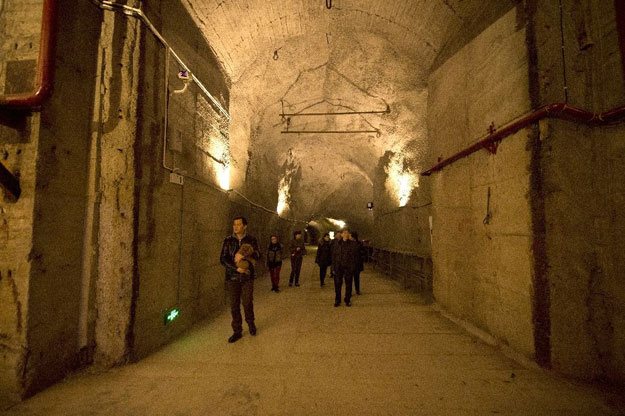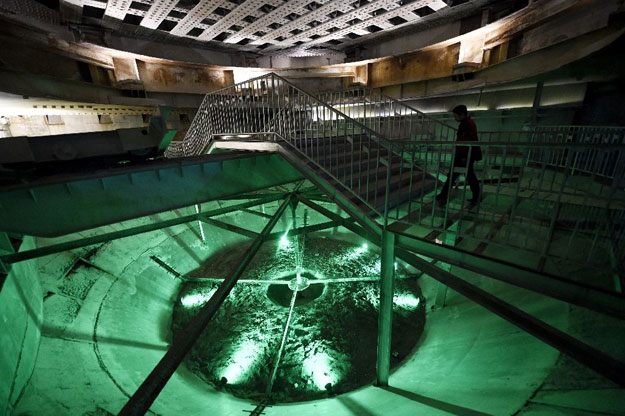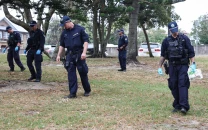China rebrands Cold War nuclear bunker as tourist attraction
It has the world's largest known network of man-made tunnels

It was a top-secret Chinese nuclear facility with a deadly Cold War mission -- to make plutonium for an atomic bomb -- but these days its doors are wide open as a tourist attraction.
The cavernous "816 Nuclear Military Engineering" installation was burrowed into lush green mountains in southwest China over a 17-year span by 60,000 soldiers toiling day and night in dangerous conditions.
Construction on the vast site began in 1967, three years after China successfully tested its first atomic weapon, as China hurried to catch its nuclear programme up with that of Cold War rivals the United States and Soviet Union.
Lahore Canal, Ravi to be developed for tourists
Located in the huge Chinese municipality of Chongqing, it covers 100,000 square metres (1.08 million square feet) -- the equivalent of 14 football pitches -- and with a volume equal to 600 Olympic-sized pools.
It has the world's largest known network of man-made tunnels, its maze-like corridors extending more than 20 kilometres (12 miles).
Surrounded by darkness and damp concrete, visitors are transported back to the Cold War.
 PHOTO: AFP
PHOTO: AFP"It's very impressive and mysterious," said Pan Ya, a thirty-something tourist from a neighbouring town who visited with her parents.
"They had heard about this place for a long time but were never able to come in," she said while gazing at the old reactor core, now decorated with fake plutonium bars coloured a luminous green.
Built for nothing
The facility cost 80 billion yuan (11 billion euros, $12 billion) but, ironically, no nuclear material ever passed through it due to a dramatic shift in developments above ground even as soldiers laboured below.
China established diplomatic ties with the US in 1979 and, later, tension with the Soviet Union also eased. Although near completion, the site was judged to have no further use and was abandoned in 1984.
Declassified in 2002, it was opened to Chinese tourists in 2010 and began welcoming foreign visitors at the end of 2016.
More than 300,000 Chinese tourists have since visited, while less than 100 foreigners had done so as of last month.
Just 10 percent of the corridors, massive halls and control rooms are open to the public, but visitors can view a light show projected upon a mammoth wall as music thunders, along with various exhibits, including a model of the first Chinese A-bomb.
"We’re not promoting nuclear weapons," explains Zheng Zhihong, 816's manager.
"Quite the opposite. I hope that one day the nuclear powers will say 'Stop, let’s all count to three and destroy our arsenals'."
Blood, sweat and years
816's rebirth as a tourist attraction comes as little comfort to the thousands of soldiers who endured hellish conditions in blasting out the site's corridors and halls.
 PHOTO: AFP
PHOTO: AFP"A colleague would detonate the explosives. Then we'd dig away at the rock with a machine. It could have collapsed at any minute," recalls former soldier Chen Huaiwen, now 70.
Officially, 76 people died in the process, but tour guides and former workers insist the number is too low. "We’d sleep several to a bed, on straw mattresses," Chen said. "It was a furnace in the summer and you wouldn't get to sleep before 1 am."
"Armed police kept watch outside while we worked on the construction. It was top-secret, entry was forbidden. At the time, ordinary people in the area only knew there was some project, they did not know what was being worked on."
The food was basic: rice and beans, with meat thrown in twice a week.
"Many got lung problems because of the dust, and that's without taking into account the toxic emissions from explosives, the machine smoke and the foul air," adds Chen.
PTDC says tourism business flourishing
Tears welled up in the eyes of another former soldier who worked on 816, Li Gaoyun, as he viewed old photos displayed in the tunnels.
It was his first visit back in 42 years.
Li said many of the ex-soldiers who toiled at 816 receive no pensions or welfare benefits despite the enormous sacrifices they made for their country.
"A lot of the former workers have no pension, no social security. They don't have enough to live on," Li said.
"They owe us that. We gave our blood, our sweat. And our youth."



















COMMENTS
Comments are moderated and generally will be posted if they are on-topic and not abusive.
For more information, please see our Comments FAQ